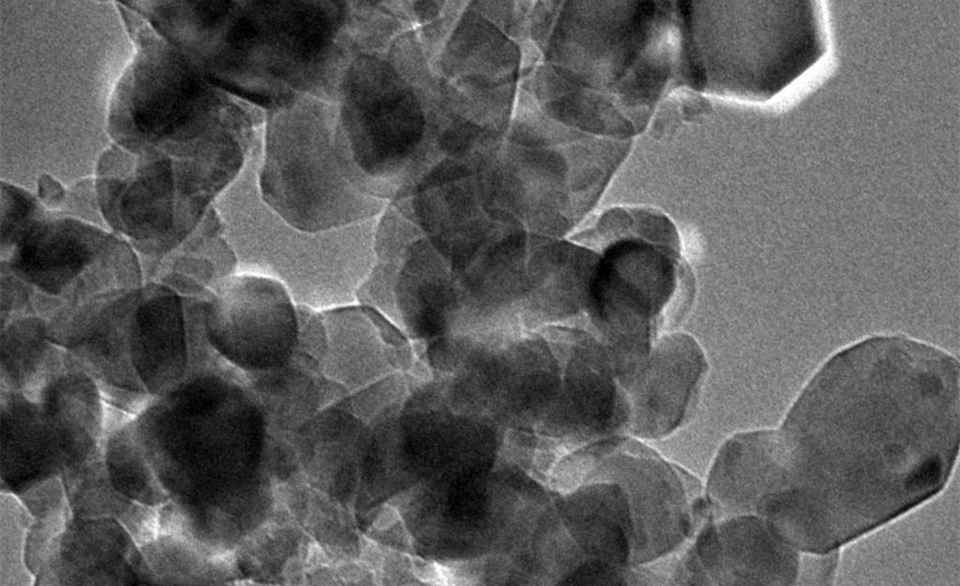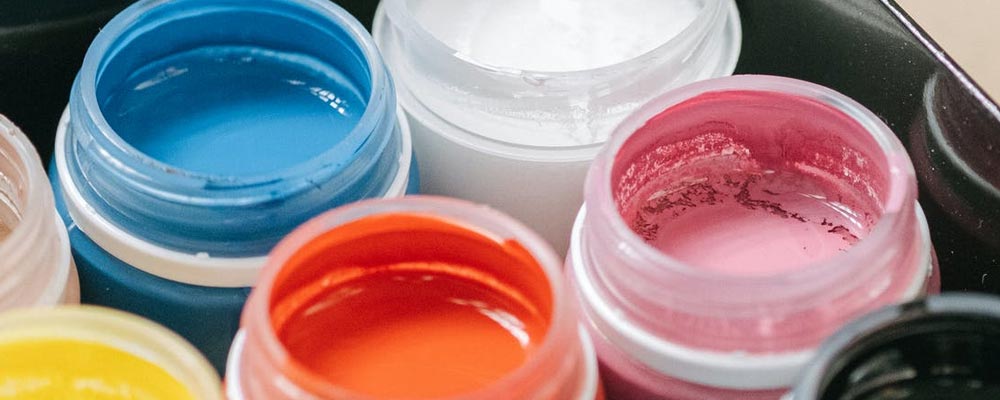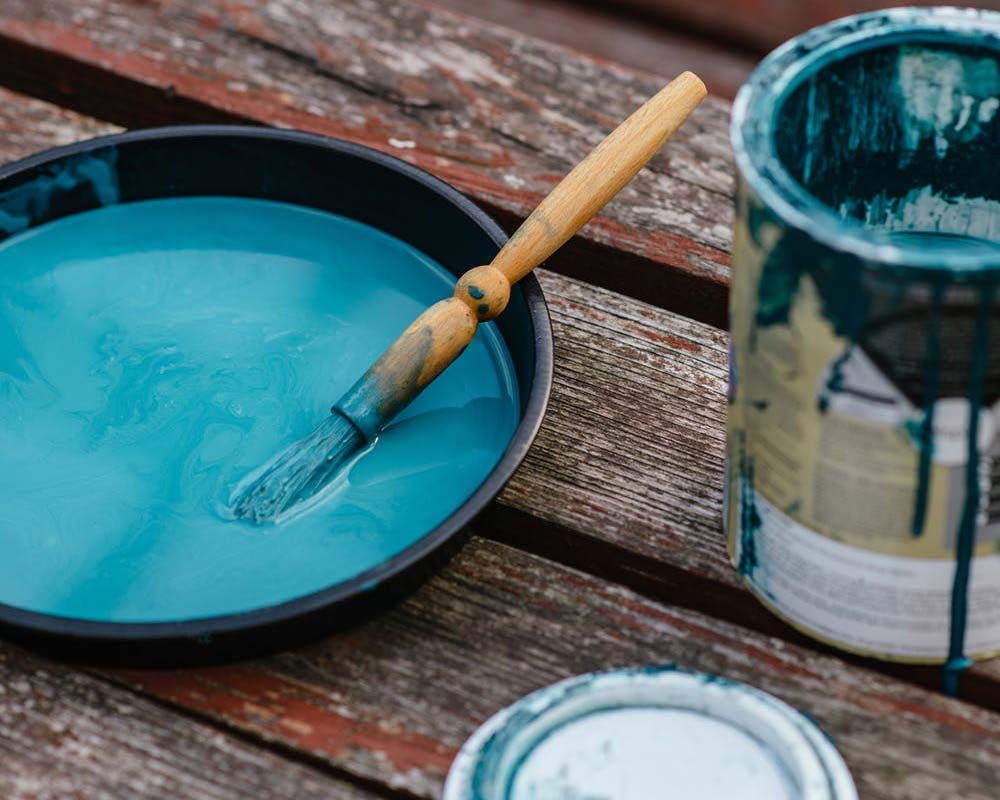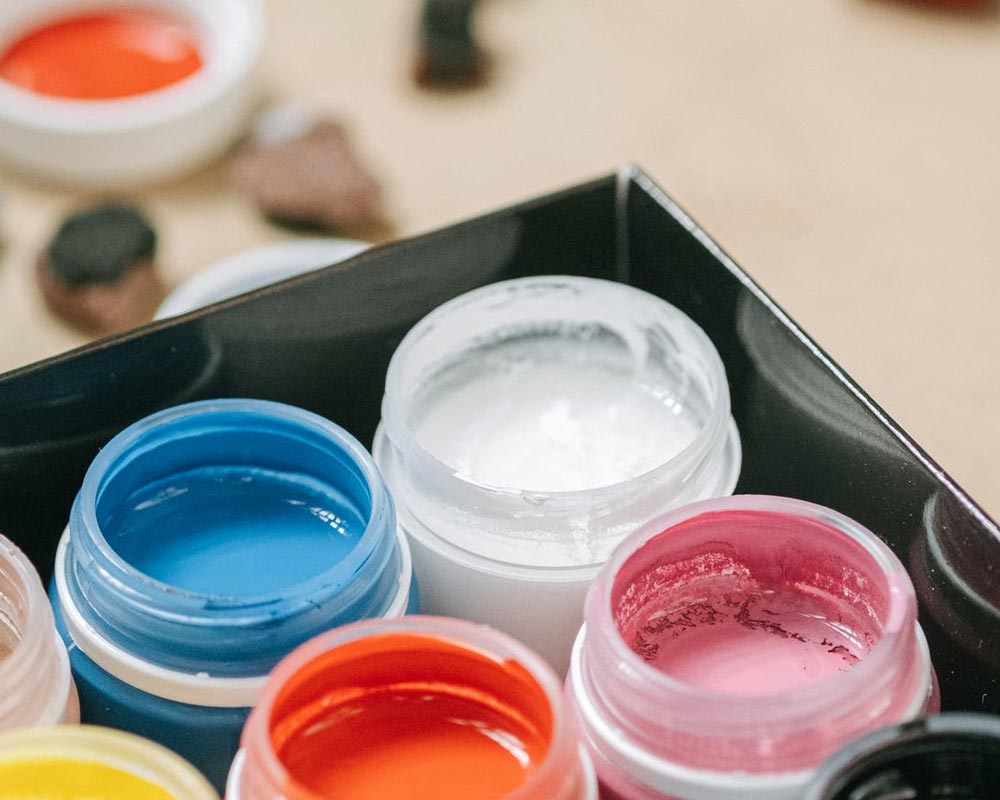What effect does the quality of titanium dioxide have on the ink?
In the manufacture of various types of inks, the proportion of titanium dioxide used is relatively large, ranging from 25% to 50%, and some are even larger. Therefore, titanium dioxide plays a vital role in the quality of the ink.

- Impact on ink whiteness
(1) The impact of impurities in the titanium dioxide on the whiteness of the ink. Generally speaking, if a small amount of iron, chromium, cobalt, copper and other impurities are mixed into the titanium dioxide, the prepared ink will produce color shift and reduce the whiteness. This is caused by the impurity ions in the titanium dioxide, especially metal ions, which distort the crystal structure of the titanium dioxide and lose its symmetry. Rutile-type titanium dioxide is more sensitive to impurities. For example, when the content of iron oxide in rutile-type titanium dioxide is greater than 0.003%, it will show color, while its content in anatase-type titanium dioxide is greater than 0.009%. Color reaction. Therefore, it is very important to choose fine, impurity-free titanium dioxide.
(2) The influence of the shape, size and distribution of titanium dioxide particles on the whiteness. High-quality titanium dioxide particles are smooth and have no edges or corners. If you use titanium dioxide with angular edges on the surface of the particles, it will greatly weaken the reflection of light and reduce the whiteness of the ink. The size of titanium dioxide particles should be controlled within 0.2~0.4μm, which is equivalent to about 1/2 of the wavelength of visible light, in order to obtain high scattering ability and make the color appear whiter. When the particle size is less than 0.1μm, the crystal is transparent. If the particle size exceeds 0.5μm, the light scattering ability of the pigment will be reduced and the whiteness of the ink will be affected. For this reason, the particle size of titanium dioxide is required to be suitable and evenly distributed to show good whiteness.
- Influence on ink hiding power
(1) The refractive index of the titanium dioxide crystal itself will directly affect the hiding power of the ink. Generally, the refractive index of titanium dioxide is the best among white pigments. When preparing white ink, titanium dioxide with high refractive index should be used to enhance the hiding power of white ink.
(2) The influence of the particle size, particle structure and dispersibility of titanium dioxide on the hiding power of white ink. Generally, in the range greater than 1/2 of the visible light wavelength, the smaller the particle size, the smoother the particle surface, the better the dispersion of titanium dioxide in the resin binder, and the stronger its hiding power. Because titanium dioxide itself has an obvious crystal structure, its refractive index is larger than that of the vehicle, and the greater the difference in refractive index between the two, the stronger the hiding power of the titanium dioxide used. Practice has proved that rutile titanium dioxide has better hiding power than anatase titanium dioxide, so it is more widely used in ink manufacturing.
- Influence on ink tinting power
The tinting power of titanium dioxide depends on its ability to scatter visible light, and it has a direct effect on the tinting power of the ink. The larger the scattering coefficient, the stronger the tinting power; the higher the refractive index of the titanium dioxide, the stronger the tinting power. Titanium dioxide is the product with the highest refractive index among white pigments, and the refractive index of rutile titanium dioxide is higher than that of anatase titanium dioxide. Therefore, the choice of titanium dioxide is to choose titanium dioxide with strong scattering ability and high refractive index.
- Impact on dispersion performance
Whether the shape of the titanium dioxide particles and the light reflection are uniform, directly affect the dispersion performance of the titanium dioxide. If the surface of the titanium dioxide particles is smooth and the reflection is uniform, the dispersibility is good, and the prepared white ink has good gloss and whiteness. On the contrary, the surface of the particles is rough and diffuse reflection increases, which will greatly reduce the gloss and poor dispersion. , Directly affect the whiteness and transfer performance of the white ink. For this reason, titanium dioxide must be processed before it can be used.
In summary, with the rapid development of packaging and publishing and printing industries, the market demand for inks will increase day by day. As a very important white pigment in inks, titanium dioxide has many properties and functions that cannot be replaced by any other material. Therefore, the amount of titanium dioxide used in inks will increase year by year, and the market application prospects will be very broad.
Article source: China Powder Network
Application & market of titanium dioxide
Titanium dioxide is a white powdery solid obtained from titanium ore through the sulfuric acid method or the chlorination method. It is considered to be a white pigment with good performance in the world. Titanium dioxide refers to the titanium dioxide whose surface has been treated with inorganic or organic to overcome the original application defects of titanium dioxide. It has the best opacity, best whiteness, gloss, excellent weather resistance, hiding power, dispersibility and other weak, chemical Performance, widely used in industrial fields such as coatings, plastics, paper, rubber and ink, and food fields.
Titanium dioxide is divided into pigment grade and non-pigment grade according to its use. Pigment-grade titanium dioxide is mainly used for white pigments. According to the crystal state, it can be further divided into anatase titanium dioxide (A type) and rutile titanium dioxide (R type). Among them, rutile titanium dioxide has better chemical stability. It is mainly used for high-grade outdoor coatings, light latex coatings, high-grade paper and rubber materials.
Anatase titanium dioxide has the advantages of high whiteness, high refractive index, large difference in refractive index from fiber-forming polymers, non-toxic and harmless, low production cost and wide raw material sources. It can be used as an additive in the production of matting cotton fiber Is applied.
Non-pigment grade titanium dioxide has purity as its main purpose. It is divided into enamel grade, ceramic grade, electric welding grade and electronic grade. Its high temperature resistance and optical properties play a major role.
The sulfuric acid method is the world's earliest industrialized production method of titanium dioxide. The process mainly includes the following aspects: pulverization and acid hydrolysis of titanium ore materials, separation and purification of TiOSO4, hydrolysis of TiOSO4 to form insoluble metatitanic acid, washing, bleaching, Calcining and crushing, surface treatment, etc.
Advantages: The sulfuric acid method can be used to produce two kinds of rutile and anatase titanium dioxide. The process technology is mature, the equipment is simple, the raw material requirements are low, and the price is cheap and abundant.
Disadvantages: The consumption of raw materials is large, the utilization rate is low, the by-products are large, the environmental pollution is serious, and the process is complicated. With the continuous innovation of technology, this production method is constantly being eliminated by enterprises.
The chlorination method is currently a widely used method for producing titanium dioxide in industrial production. The emergence of the chlorination method can not only produce high-quality titanium dioxide, but also solve the problem of the long process flow of the sulfuric acid method, reduce the emissions of the three industrial wastes, and be beneficial to environmental protection. At the same time, this method is easy to realize automated production, which is in line with the requirements of modern enterprises. Production requirements.
Application of Titanium Dioxide
Coatings, papermaking and plastics are the three main application areas of titanium dioxide. Other application areas include ink, chemical fiber, cosmetics, rubber, food industry and medicine. The use of titanium dioxide for non-pigment is mainly in the fields of enamel, ceramics, capacitors, welding rods, catalysts, and the field of nano-titanium dioxide that requires optical properties of titanium dioxide but does not require its covering properties.
- Coating
At present, coatings are the largest application field of titanium dioxide. The TiO2 consumed by the coatings industry accounts for 58% to 60% of the total consumption of titanium dioxide pigments. Titanium dioxide is also the most used pigment in the coating industry, accounting for about half of the cost of coating colorants, and 10% to 25% of the cost of coating raw materials. As a kind of chemical advanced material product, coating has been greatly developed in recent years, and the total output of the industry reached 17.598 million tons in 2018.

- Plastic
Plastics are currently the second largest user of titanium dioxide pigments, accounting for 18% to 20% of the world's total demand for titanium dioxide. The amount of titanium dioxide added to the plastic will vary with its varieties and applications, generally between 0.5% and 5%. At present, the annual output of plastic products is more than 60 million tons, and the consumption of titanium dioxide is about 600,000 tons. Titanium dioxide has excellent weather resistance, hiding power, dispersibility and other physical and chemical properties, which greatly meets and adapts to the production standard requirements of plastic industrial products for titanium dioxide performance and quality.

- Papermaking
The paper industry accounts for 11% of the total consumption of titanium dioxide. The application of titanium dioxide in the paper industry is very similar to that of the plastics production industry. Both are used as basic pigments. In the paper industry, titanium dioxide can also be used as a filler. It is used to improve the optical properties of paper to better enhance its opacity, including improving its brightness, whiteness, smoothness, uniformity, etc.

Performance comparison of different types of titanium dioxide in the field of papermaking
| Paper Classification | Rutile | Anatase | Remark |
| Decorative paper | √ | High anti-aging requirements | |
| High ash paper | √ | The hiding power of anatase titanium dioxide does not meet the requirements | |
| Low ash paper | √ | Good opacity required | |
| Coinage paper | √ | Good opacity required |
- Ink
The whiteness quality of titanium dioxide is guaranteed, the water resistance is strong, the hiding power is large, and the weather resistance, heat resistance and chemical properties are very stable. In the ink industry, titanium dioxide is a necessary production material. Titanium dioxide in the ink not only has the function of improving gloss and aesthetics, but also can improve the properties of the ink.
- Masterbatch
Color masterbatch is developed in modern times and is used in coloring products of plastics and other systems. Its principle is to load an excess amount of pigment in resin to prepare a polymer compound for coloring. The main components include: resin, pigment, dispersant, etc. The core of the development of color masterbatch technology is the compatibility of pigments, dispersants and resins. The goal is to increase the pigment content and coloring effect in the color masterbatch. The key is to improve the dispersion of the pigment in the color masterbatch. Titanium dioxide is widely used in industries such as color masterbatch, especially in some high-end color masterbatch industries, it is one of the necessary coloring raw materials.
- Chemical fiber
The chemical fiber industry (especially anatase) is another important application field of titanium dioxide. Since the molecules in the chemical fiber industry are neatly arranged, the fiber surface is smooth, has a dazzling luster, and is translucent, so it is necessary to add a matting agent before spinning. Titanium dioxide is the most ideal matting material in the synthetic fiber industry.
- Denitration catalyst
Denitration catalyst generally refers to the catalyst used in the SCR denitration system of power plants. In the SCR reaction, the reducing agent will selectively react with the nitrogen oxides in the flue gas at a certain temperature.
From a global perspective, the global effective production capacity of titanium dioxide is about 7.2 million tons, and CR10 (the company with the top 10 effective production capacity) accounts for 65%, mainly in North America, Western Europe, and Japan.
Article source: China Powder Network
Performance of Titanium Dioxide & Its Function and Application in Coatings
Titanium dioxide pigments are divided into two types: anatase type and rutile type. According to international practice, they are called R type and A type respectively. The rutile type and anatase type without post-treatment are called RI type and AI type respectively; the rutile type and anatase type after the post-treatment are called R2, R3 and A2 type respectively. At present, most of the rutile titanium dioxides on the market belong to R2 and R3 types, of which R2 type accounts for more than 70% of sales. R2 and R3 account for 77% and 22% of rutile titanium dioxide for coatings, respectively.
Performance and use of pigment grade titanium dioxide
Pigment-based titanium dioxide has high refractive index, strong achromatic power, large hiding power, good dispersibility, good whiteness, non-toxic, stable physical and chemical properties, and excellent optical and electrical properties, so it has a wide range of uses , Paint, plastic, paper, chemical fiber, ink, rubber, cosmetics, etc. all use pigment-grade titanium dioxide. Among them, the largest amount is paint, accounting for about 57%. In particular, rutile titanium dioxide is mostly consumed by the coating industry. With the rapid rise of China's automobile industry, construction industry and water-based coatings, the coating industry not only needs more titanium dioxide in quantity, but also has higher quality requirements and more varieties.
The refractive index of rutile titanium dioxide is 2.76, and the refractive index of anatase titanium dioxide is 2.55. The hiding power is determined by the difference between the refractive index of the pigment and the refractive index of the medium, and their relative values can be calculated according to the formula. The reflection coefficient of rutile titanium dioxide is 25% to 30% higher than that of anatase titanium dioxide, which means that if it produces the same hiding power as anatase titanium dioxide, the amount of rutile titanium dioxide can be reduced by 25% to 30%. In addition, rutile titanium dioxide has a compact structure, relatively stable, low photochemical activity, resistance to ultraviolet light, is not easy to pulverize outdoors, and has better weather resistance and gloss than anatase titanium dioxide. Therefore, it is widely used in various outdoor coatings with high weather resistance for high-grade ships, bridges, automobiles, buildings, etc., which accounts for about 70% of the coatings. Anatase titanium dioxide is easy to pulverize and yellow, so it is generally only used For indoor coatings or primers, the amount only accounts for 30% of the titanium dioxide used in coatings.
The role of pigment grade titanium dioxide in coatings
Coatings are viscous suspensions composed of base materials, pigments, fillers, solvents and additives. It is coated on the surface of the object to form a tough coating film, which plays a role of decoration and protection on the object.

Regardless of solvent-based or water-based coatings, if titanium dioxide is used, its role is not only to cover and decorate, but also to improve the physical and chemical properties of the coating, enhance chemical stability, and even improve hiding power, color reducing power, and corrosion resistance., Light resistance, weather resistance, enhance the mechanical strength and adhesion of the paint film, prevent cracks, prevent the penetration of ultraviolet rays and moisture, thereby delaying aging and extending the life of the paint film. At the same time, it can save materials and increase varieties.
Regardless of solvent-based or water-based coatings, if titanium dioxide is used, its role is not only to cover and decorate, but also to improve the physical and chemical properties of the coating, enhance chemical stability, and even improve hiding power, color reduction power, and corrosion resistance. , Light resistance, weather resistance, enhance the mechanical strength and adhesion of the paint film, prevent cracks, prevent the penetration of ultraviolet rays and moisture, thereby delaying aging and extending the life of the paint film. At the same time, it can save materials and increase varieties.
Among the pigments, white pigments are the most widely used. Both white paints and light-colored paints use it. Therefore, the amount of white pigments used in paint production is much more than other pigments. The white pigments commonly used in coatings include zinc white, lithopone, titanium white and so on. Because some synthetic resin coatings have a high degree of polymerization, if zinc white is added, the zinc white will have a tendency to thicken due to its alkalinity and anti-acid effect with the free fat in the coating; if zinc white is added, the weather resistance will be poor. But the use of titanium dioxide can improve the above shortcomings. Because the titanium dioxide particles are small and uniform, and the photochemical stability is high, in terms of hiding power, rutile titanium dioxide is 7 times that of zinc white and 5.56 times that of lithopone, and anatase titanium dioxide is 5.57 times that of zinc white. Lithopone is 4.3 times; in terms of decoloring power, rutile titanium dioxide is 8.3 times that of zinc white and 6.25 times that of lithopone. Anatase type titanium dioxide is 6.4 times that of zinc white and 4.8 times that of lithopone. Times. In terms of use effect, 1t of titanium dioxide is at least equivalent to 4t of lithopone; in terms of service life (referring to outdoor chalking resistance), the coating with titanium white as a pigment is 3 times higher than that with lithopone as a pigment. Therefore, the use of titanium dioxide can greatly reduce the amount of pigments in the entire coating, and the coatings made are bright in color, not easy to yellow, light resistance, heat resistance, abrasion resistance, weather resistance, alkali resistance, sulfur resistance, and dilute acid resistance. It is precisely because titanium white has superior performance than zinc white and lithopone, it has become the best white pigment indispensable in paint production. The amount of titanium dioxide accounts for more than 90% of the total amount of pigments used in coatings, and more than 95% of the total amount of white pigments used in coatings. It accounts for 10% to 25% of the cost of coating raw materials.
Article source: China Powder Network

